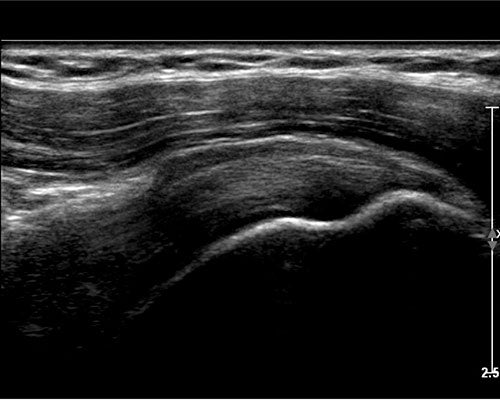Ultrasound
Safe and reliable soft tissue investigations
Ultrasound involves the sending of high frequency inaudible sound waves through the body by a device called a transducer placed on the skin surface. A lubricating gel is applied to the body to ease movement of the transducer over the skin and allow the sound waves to pass through the skin. The sound waves are reflected by the internal organs and the returning echoes are recorded by the transducer to create an image of the internal anatomy. Doppler scans can be used to visualise blood flow inside the structures being evaluated. Ultrasound does not involve ionising radiation (as in X-rays) and is safe in pregnancy.Ultrasound is extremely useful in assessing the soft tissues within the body especially the muscles and tendons and also any lumps or bumps on the arms, legs or torso. It also allows for a dynamic examination and opportunity for performing diagnostic and therapeutic intervention (injections and biopsies).
However, ultrasound does have limitations and may not be the most suitable test if there is concern regarding fracture or where the referring clinician wants to know about a joint, cartilage or internal structures within the joint.
The ultrasound image is viewed in real-time. This means that both the structure and movement of the internal organs can be seen at the time of the examination, and the radiologist will be able to discuss the findings with you once the scan is complete.



